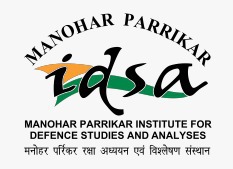Draft DPP 2020 – Keep it Simple
Draft DPP 2020 needs to cut out obfuscation, repetitions, and bring out core issues for the consideration of the decision-makers in a concise and clear manner.
- Kishore Kumar Khera
- April 17, 2020
The Centre for Military Affairs comprises of a mix of serving officers of the Indian Armed Forces and civilian experts. The Centre adopts an inter-disciplinary approach to various issues that impinge upon India’s national security in general and the armed forces in particular. Its research focus is on issues that impact upon national security and capacity-building of the Indian armed forces. Specific areas of focus include: emerging contemporary challenges in warfare, jointness, defence co-operation, maritime security, and military training needs. In addition, the Centre also addresses China- and Pakistan-related issues with a bearing on their interface with Indian security. The Centre closely interacts with military establishments in India and abroad and contributes to policy making by conducting research in areas of significance for the armed forces.
No posts of Books and Monograph.
No posts of Jounral.
Draft DPP 2020 needs to cut out obfuscation, repetitions, and bring out core issues for the consideration of the decision-makers in a concise and clear manner.
The large scale social and economic disruption caused by COVID-19 has brought to our attention the socio-economic plight of urban migrant workers and the need for a more effective information dissemination.
The Indian Army is at the cusp of a huge change. It has to concurrently manage the matter of Women Officers as seamlessly as possible. Success in this venture is predicated squarely on the mindsets of the seniors in charge and the WO community
The adverse impact of lowering of colour service of soldiers below pensionable service will not only be felt at the structural and functional level but also the psychological level.
The laser-based aerospace defence assets, as and when they are fully developed and deployed, could prove to be a potent deterrent.
The proposal to create an Air Defence Command is a bold move. Rather than resorting to less contentious issues to commence the integration process, the CDS has selected a very pertinent and significant operational issue. However, the way the proposed Air Defence Command is structured will be crucial as it will set the tone for further integration of all three services.
Considering the loss of tactical advantage that would come about by not adopting automation and autonomous weapon systems in future, militaries would invariably be obligated to adopt the concept of full automation while keeping humans on the loop.
Availability of logistics support facilities with partner countries will further enhance the ability of the Indian Navy to maintain appropriate ‘presence’ for extended periods in the wider Indo-Pacific.
Considering the wide expanse to be covered on both sides of the Indian Peninsula, and the possibility of concurrent operations on either side, it is imperative that India maintains an operational carrier battle group on both sides, and at all times.
The blueprint for the operationalisation of CDS would require intensive deliberation to make sure that no aspect of its implementation is left unaddressed.



